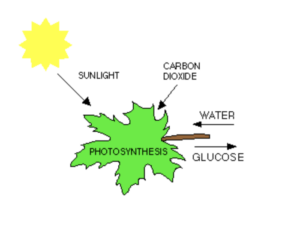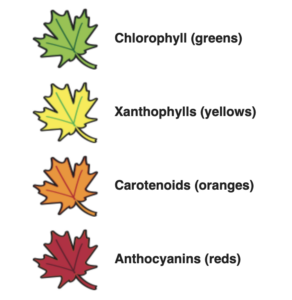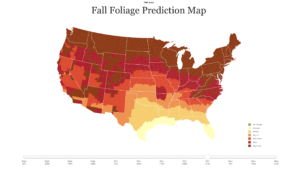Ask a Naturalist: The Science of Fall Color
Fall is an exquisite season of change that shows one of the more amazing processes in nature. As the days get shorter and shorter, the trees are signaled that their period of growth is at an end. Many then begin a slow, beautiful change in foliage as they prepare for colder temperatures and less light. We get to enjoy this physical transformation as forests and greenways turn into a patchwork of greens, browns, yellows, oranges, and even reds. It leads many to ask, how does this change happen?
Trees gain energy through photosynthesis, a process through which light, carbon dioxide, and water are transformed into the sugar, glucose. This process happens within special cells called chloroplasts, which contain the green pigment, chlorophyll, and is necessary for photosynthesis to take place. During the warm summer months, chlorophyll is continuously used and produced, causing the leaves to appear green in color.
The main reason that leaves start to change color in the fall is both the shortening of the day and decrease in the intensity of the sunlight. These changes lead to cooler weather and longer nights, which then trigger biochemical processes within the leaves to start preparing to fall.
The main difference we see is the change in leaf color, typically from green to yellow, orange, brown, or red. As chlorophyll stops being produced, the green color fades and gives way to carotenoids and xanthophylls which are responsible for the yellow, orange, and brown colors. Most people are familiar with carotenoids, as they are the same pigments that make carrots orange and bananas yellow. At the same time that chlorophyll production is slowing down, another pigment is being produced called anthocyanin, which lends a red hue to certain leaf types. Anthocyanins are responsible for giving cranberries, cherries, and plums their reddish purple colors.
This leads to certain tree species having specific fall leaf colors. For example White Oak trees tend to be more reddish brown, Boxelder and Redbuds are yellow, and Sourwood trees are scarlet red. We have a blog post on our website called Identifying Fall Trees which is a helpful guide to the different trees changing color in and around Gateway Nature Preserve.
It should be noted that not all trees change color and drop their leaves. Some stay evergreen all year round. This is because they typically have tougher, more robust leaves that can withstand the cold temperatures. These leaves have a wax coating that make them appear glossy, and allow them to shed water and snow. Therefore, trees such as pines and magnolias, resist freezing and keep their access to light unimpeded.
So while the amount of daylight is a good predictor of when the leaves start their change, the intensity of the colors we see are influenced mainly by the weather. Late springs, droughts, and unseasonably warm falls can delay the emergence of fall color and lower their intensity. Ideally, there is a gradual temperature change, with warm sunny days, and cool but not freezing nights. This allows a lot of sugars to be produced during the day, and for their slow progression out of the leaf at night.
Many scientists have spent a great deal of time trying to understand and predict how and when the leaves will change. This has led to fall foliage prediction maps, fall color trackers, and databases dedicated to chronicling and tracking the fall color change. The Smoky Mountains website has an interactive map that allows you to see a prediction of when fall color might peak across the United States! North Carolina is in the peak of fall colors, so we would encourage you to wander through our trails at Gateway, and experience this beautiful patchwork of color for yourself.
Here is the Smoky Mountain Website if you would like to investigate further: https://smokymountains.com/fall-foliage-map/
Appalachian State has a fall color forecaster map that it updates with latitude and elevation to enhance it prediction of fall colors: https://biology.appstate.edu/fall-colors/fall-color-map-north-carolina
Explore Ashville has a fall color map and leaves schedule: https://www.exploreasheville.com/trip-ideas/seasonal-fun/fall/interactive-fall-color-map/
USA National Phenology Network has an entire database dedicated to collecting and holding data and information related to the timing of seasonal events in plants and animals:
https://www.usanpn.org/data/spring_indices